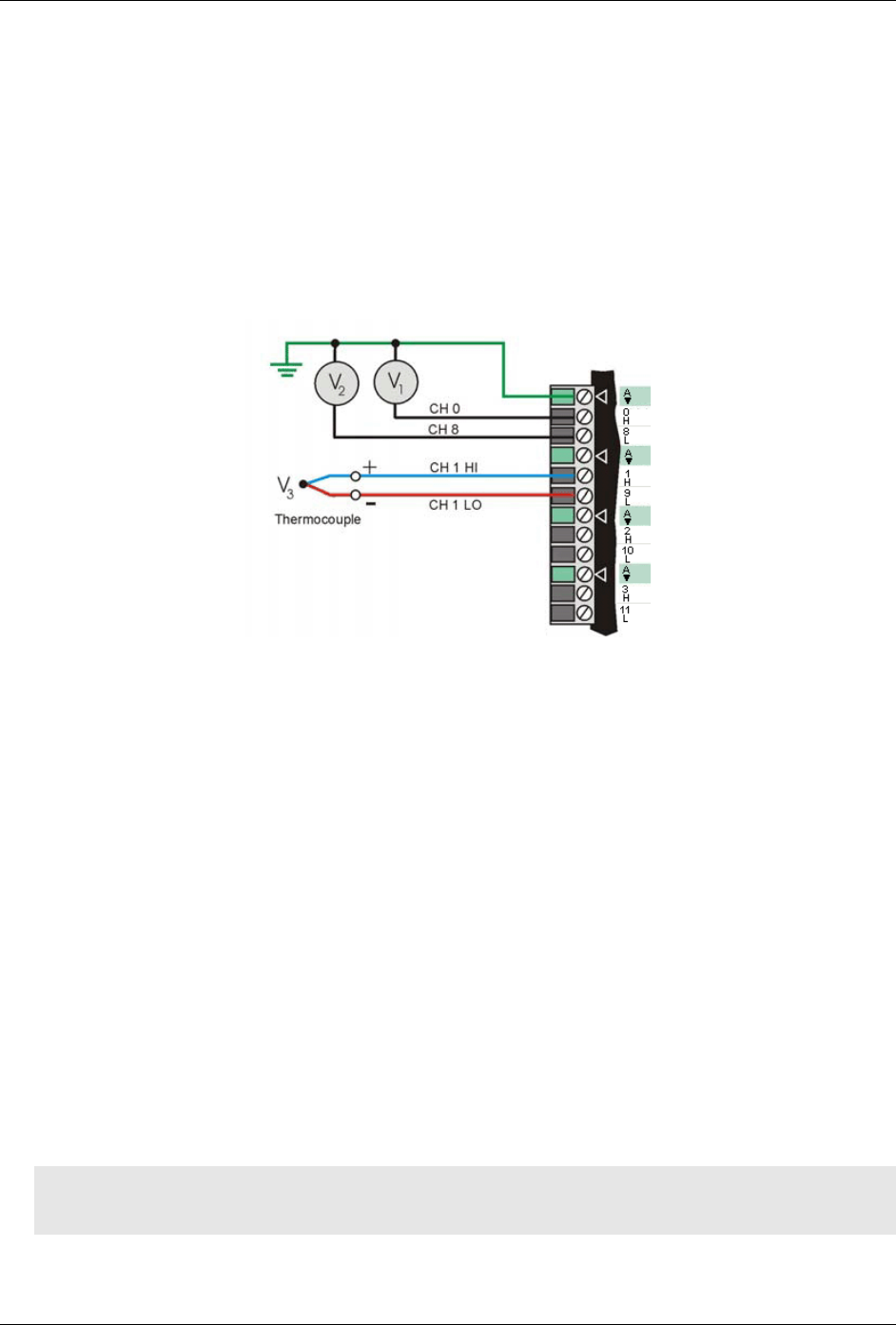
USB-1616HS-2 User's Guide Installing the USB-1616HS-2
11
Installing the hardware
To connect the USB-1616HS-2 to your system, turn your computer on, and then do the following:
Connect signal lines to the USB-1616HS-2's removable screw terminal blocks.
o Connect voltage signals as single-ended or differential connections (see Figure 1).
o Connect thermocouple signals as differential connections (see Figure 1). The negative (typically, the
red) thermocouple wire connects to the channel's LO connector, and the other color wire connects to
the channel's HI connector.
Always use differential input mode for thermocouple connections.
Figure 1. Single-ended voltage connections (V
1
and V
2
) and differential thermocouple connections (V
3
)
If you are using an AI-EXP48 expansion device, connect it to the USB-1616HS-2. Make sure you do not
connect the AI-EXP48 to a live USB-1616HS-2. If the USB cable is connected to the computer, unplug it
before you connect the AI-EXP48.
If you are using the TR-2U external supply (sold separately), connect the power supply to the USB-
1616HS-2's external power connector, and plug the other end into a power outlet.
The TR-2U is optional, but can be used in any scenario. You may need a TR-2U
power supply if the USB
port does not provide enough power for your USB-1616HS-2 application.
The USB-1616HS-2 requires 3000 mW by itself, and 3400 mW when connected to the AI-EXP48.
By USB2 standards, USB 2.0 ports are required to provide at least 2500 mW.
Connect the USB cable to the USB-1616HS-2 USB connector and to a USB port on your computer. A
USB2.0 port is recommended—connecting to a USB1.1 port results in lower performance.
When you connect the USB-1616HS-2 for the first time, a
Found New Hardware message opens as the
USB-1616HS-2 is detected. When the message closes, the installation is complete.
The
power LED (bottom LED) blinks during device detection and initialization, and then remains solid if
properly detected. If not, check if the USB-1616HS-2 has sufficient power. When the board is first powered on,
there is usually a momentary delay before the power LED begins to blink, or come on solid.
Caution! Do not disconnect any device from the USB bus while the computer is communicating with the
USB-1616HS-2, or you may lose data and/or your ability to communicate with the USB-1616HS-
2.
